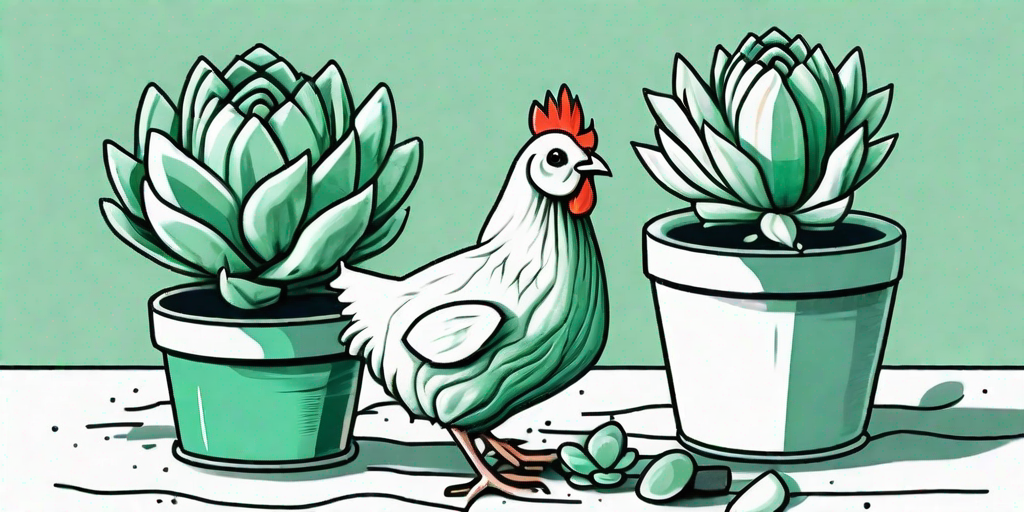
The Hen and Chick plant, also known as Sempervivum, is a popular succulent that brings joy to many a gardener with its cute, rosette-shaped offspring. But what happens when your beloved plant starts to look a little...under the weather? Fear not, dear reader, for we have the remedy! This guide will provide you with a comprehensive rundown on how to nurse your Hen and Chick plant back to health, and keep it thriving for years to come.
Understanding Your Hen and Chick Plant
Before we dive into the nitty-gritty of plant healthcare, let's take a moment to understand what makes the Hen and Chick plant tick. This succulent is a hardy little character, capable of withstanding harsh conditions. However, like all living things, it has its limits and can fall prey to a variety of ailments.
Hen and Chick plants are native to the mountainous regions of Europe and Asia, so they are used to a bit of rough and tumble. They can handle cold, drought, and poor soil conditions. But, if you're keeping them indoors or in a climate that's vastly different from their natural habitat, they may need a little extra TLC.
Signs of an Unhealthy Hen and Chick Plant
So, how can you tell if your Hen and Chick plant is feeling a bit under the weather? Well, there are a few telltale signs to look out for. If your plant's leaves are wilting, discolored, or falling off, it's time to take action.
Other signs of an unhealthy plant include a lack of new growth, a soft or mushy texture, or a plant that's leaning or falling over. If your plant is displaying any of these symptoms, don't panic! With a little bit of know-how and some tender loving care, you can nurse your plant back to health.
Reviving Your Unhealthy Hen and Chick Plant
Now that we've identified the problem, let's get down to business. Here are some tried and tested methods to revive your unhealthy Hen and Chick plant.
Check the Watering
Like all succulents, Hen and Chick plants don't require a lot of water. In fact, overwatering is one of the most common causes of plant health issues. If the soil is constantly wet, it can lead to root rot, which is a death sentence for any plant.
To avoid overwatering, make sure you're using a well-draining soil mix and only water your plant when the top inch of soil is dry. Remember, these plants are used to dry conditions, so when in doubt, less is more!
Inspect for Pests
Another common issue is pests. Aphids, mealybugs, and spider mites can all wreak havoc on your Hen and Chick plant. If you notice small, discolored spots on your plant or a sticky residue on the leaves, you may have a pest problem.
To treat pests, you can use an insecticidal soap or a mixture of water and dish soap. Spray the solution on the affected areas and wipe it off after a few minutes. Repeat this process until the pests are gone.
Preventive Measures for a Healthy Plant
As the old saying goes, prevention is better than cure. Here are some preventive measures you can take to ensure your Hen and Chick plant stays healthy.
Proper Lighting
Hen and Chick plants love sunlight. If your plant isn't getting enough light, it may start to stretch out or lose its vibrant color. To prevent this, place your plant in a sunny spot where it can get at least six hours of sunlight a day.
If you're keeping your plant indoors, consider using a grow light, especially during the winter months when sunlight is scarce.
Right Temperature
While these plants can handle cold temperatures, they don't do well in extreme heat. If the temperature is consistently above 30°C (86°F), your plant may start to suffer. Try to keep your plant in a location where the temperature is between 15-26°C (60-80°F).
During winter, bring your outdoor plants inside to protect them from frost. While they can handle a bit of cold, prolonged exposure to freezing temperatures can be harmful.
Frequently Asked Questions
Why is my Hen and Chick plant turning yellow?
Yellow leaves are usually a sign of overwatering. Check the soil and make sure it's not too wet. If it is, let it dry out before watering again.
Can I save a Hen and Chick plant with root rot?
It's possible, but it can be tricky. You'll need to remove the plant from the soil, cut off the affected roots, and let the plant dry out before replanting it in fresh, well-draining soil.
How often should I water my Hen and Chick plant?
There's no set schedule for watering these plants. A good rule of thumb is to water when the top inch of soil is dry. This could be once a week in hot weather or once a month in cooler conditions.
Wrapping Up
And there you have it, folks! A comprehensive guide to reviving your unhealthy Hen and Chick plant. Remember, these plants are tough little characters, so don't lose hope if your plant is looking a little worse for wear. With a bit of TLC, it'll be back to its old self in no time.
So go forth, dear reader, and use your newfound knowledge to nurse your plant back to health. And remember, the key to a healthy plant is prevention. So keep an eye on your plant, give it the right conditions, and it'll reward you with its beautiful, rosette-shaped offspring for years to come.















